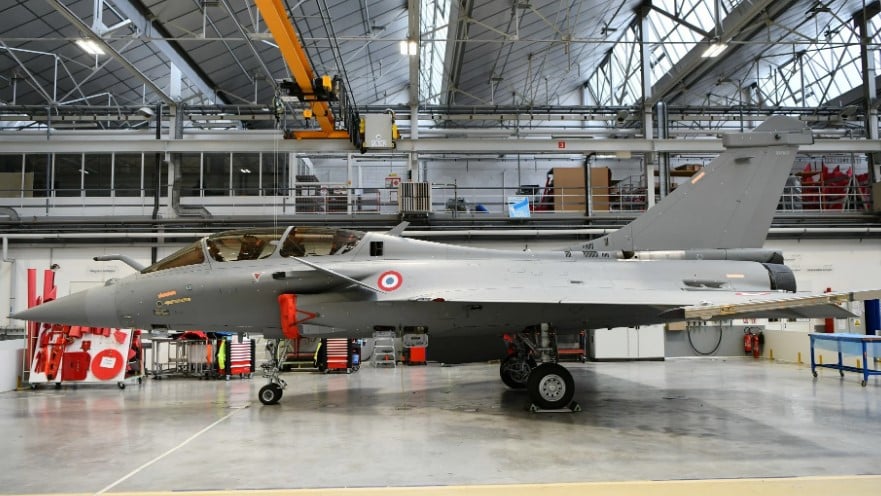Aerospace
“Dassault Aviation in Talks to Acquire Reliance’s Stake in DRAL: A Boost for Rafale Production in India”

According to reports, Dassault Aviation, the French company that makes Rafale fighter jets, is in talks to acquire Reliance’s ownership part in the joint-venture manufacturing facility Dassault Reliance Aerospace Limited (DRAL), which is situated in Nagpur. This action follows the recent news that the Rafale-Ms has been chosen as the carrier-borne fighter for the Indian Navy, which was announced during Prime Minister Narendra Modi’s visit to France.
Indian Navy to buy Rafale M fighter plane after IAF?(Opens in a new browser tab)
Due to budgetary restrictions, further factory growth has been put on hold, according to industry sources, although Dassault Aviation has already started talking with Reliance Defence about the acquisition. Dassault owns 49% of the joint venture, with Reliance Defence owning the remaining 51%.
The DRAL factory was first built to produce parts for Falcon aeroplanes and is located in Nagpur’s MIHAN Special Economic Zone. However, it has been said that Dassault Aviation is thinking of building Rafale fighter jet components at the plant for international clients. It is anticipated that Dassault Aviation will develop a special Rafale manufacturing plant in India if it wins the contract to build 114 aircraft for the Indian Air Force.
Why did the UAE place the largest Rafale order?(Opens in a new browser tab)
The Indian Air Force (IAF) has a sanctioned strength of 42 Squadrons, but currently only has 31, including those of the ageing MiG 21s and Jaguar in addition to the MiG 29 — all of which will be decommissioned by 2029–2030. The 36 were purchased as an emergency measure to stop the sharp decline in numbers.

Aerospace
Boeing Transfers Rocket Stage to NASA, Paving Way for Human Moon Mission

Boeing has achieved a significant milestone by providing NASA with the second core stage of the Space Launch System (SLS) rocket.
This crucial component, crafted at NASA’s Michoud Assembly Facility (MAF), is set to propel the Artemis II crew into lunar orbit, marking humanity’s return to deep space after a 50-year hiatus.
The monumental Boeing-built rocket stage, the largest element of the Artemis II mission, will embark on a journey aboard the Pegasus barge, traveling 900 miles to NASA’s Kennedy Space Center.
Comparison of two legendary aircraft B777x vs B747 aircraft:Click here
Upon arrival, it will be meticulously integrated with other essential Artemis II components, including the upper stage, solid rocket boosters, and NASA’s Orion spacecraft within the iconic Vehicle Assembly Building. This intricate integration process is a vital step toward the eagerly anticipated Artemis II launch, slated for 2025.
“Boeing-built products helped land humankind on the moon in 1969, and we’re proud to continue that legacy through the Artemis generation,” remarked Dave Dutcher, vice president and program manager for Boeing’s SLS program. “Together, with NASA and our industry partners and suppliers, we are building the world’s most capable rocket and paving the way to deep space through America’s rocket factory in New Orleans.”
NASA, Lockheed Martin Reveal X-59 Quiet Supersonic Aircraft:Click here
The delivery of Core Stage 2 marks a significant achievement in the evolution of the SLS rocket. Towering over 200 feet and powered by four RS-25 engines, this core stage, coupled with two solid-fueled booster rockets, will generate a staggering 8.8 million pounds of thrust. This immense power is crucial to launching Artemis II and future missions into the vast expanse of space.
The SLS rocket stands unparalleled in its capability to transport both crew and substantial cargo to the moon and beyond in a single launch. Its extraordinary capacity will facilitate the delivery of human-rated spacecraft, habitats, and scientific missions to destinations including the moon and Mars, ushering in a new era of space exploration.
-

 Travel1 week ago
Travel1 week agoAir India to Expand US Operations with Three New Routes After a Decade
-

 Travel2 weeks ago
Travel2 weeks agoWhy We Should Avoid These Stamps in a Passport
-

 Airlines1 month ago
Airlines1 month agoInvestigations Reveal Fake Chinese Titanium in Boeing and Airbus Jets
-

 Tech4 weeks ago
Tech4 weeks agoChina’s CATL Plans 1,800-Mile Electric Plane Launch by 2027
-

 Airport3 days ago
Airport3 days agoTop 10 Largest Airports in the World by Size
-

 Aerospace4 weeks ago
Aerospace4 weeks agoChina’s Fighter Jets Turn Wings into Autonomous Drones
-

 Airlines4 days ago
Airlines4 days agoAir India Rolls Out A350s for Delhi-New York JFK and Newark Routes
-

 Defence3 weeks ago
Defence3 weeks agoBoeing Enhances Chinook with New Engines and Block II Upgrades at $96 Million







